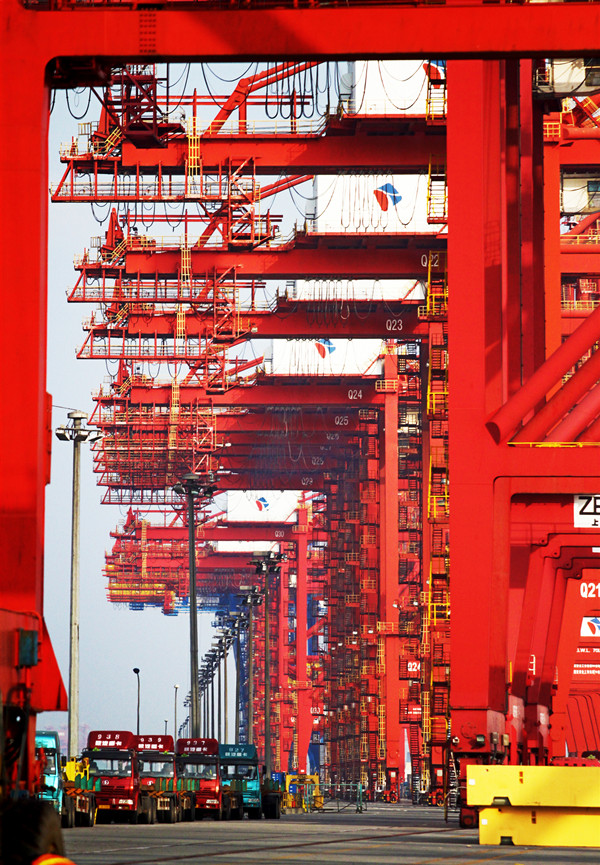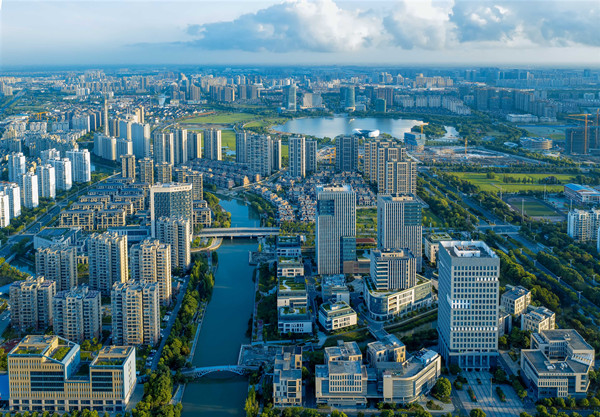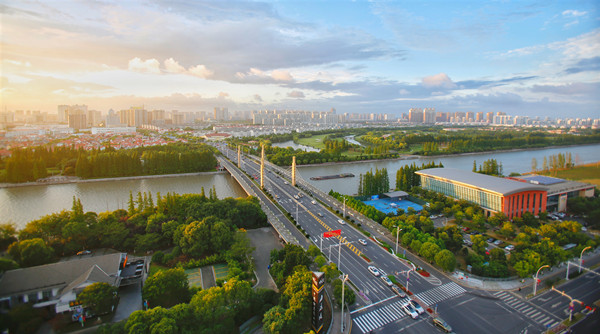New railways give Yangtze region a push

A trial train hits 220 kilometers per hour on a section of the Shanghai-Suzhou-Nantong Railway during a top-speed test run on May 4. [XU CONGJUN/FOR CHINA DAILY]
The Yangtze River Delta region, one of China's most economically active, open and innovative areas, is gaining momentum in regional integration with two newly opened railway lines to enhance its transportation interconnection, according to the country's railway operator.
One of the two new lines-Shanghai-Suzhou-Nantong Railway, connecting Shanghai with Nantong in neighboring Jiangsu province-is scheduled to start operating on Wednesday, according to China State Railway Group.
With a designed speed of 200 kilometers per hour, the 143-kilometer rail line will cut travel time between Shanghai and Nantong to about one hour from the current 3.5 hours, according to the company.
The railway, an important part of a planned coastal passage, will connect the northern part of Jiangsu with neighboring Shandong and Zhejiang provinces via existing railways and a new line under construction.
The company also noted that the opening of the line is of great significance in efforts to enhance the role of Shanghai in driving the regional economy and promoting the regional integration of the Yangtze River Delta, which consists of Shanghai municipality and the provinces of Jiangsu, Zhejiang and Anhui.
Another new railway-the Shangqiu-Hefei-Hangzhou High-speed Railway, which threads the provinces of Henan, Anhui and Zhejiang-opened on Sunday, as did its last section linking Anhui's Hefei and Zhejiang's Huzhou.
The 794.5-kilometer route, with a maximum designed speed of 350 kilometers per hour, is expected to further boost the coordinated development of the Yangtze River Delta region, the company said.
Wang Anli, deputy general manager of an industrial robot arm company in Xuancheng, in Anhui, is now able to travel to meet her clients 210 kilometers away in less than an hour thanks to the opening of the railway.
Wang said that before the new line opened, the journey from Xuancheng to Hangzhou in Zhejiang took her about two hours to complete as she needed to take a one-hour bus to the nearest high-speed railway station before heading to Hangzhou.
As China highlights the importance of new infrastructure, the region is expected to be injected with more incentives to further facilitate its integrated development.
Last year, China unveiled an outline for the regional integrated development of the Yangtze River Delta, which contributes about one-fourth of the country's GDP and about one-third of foreign trade and investment.









